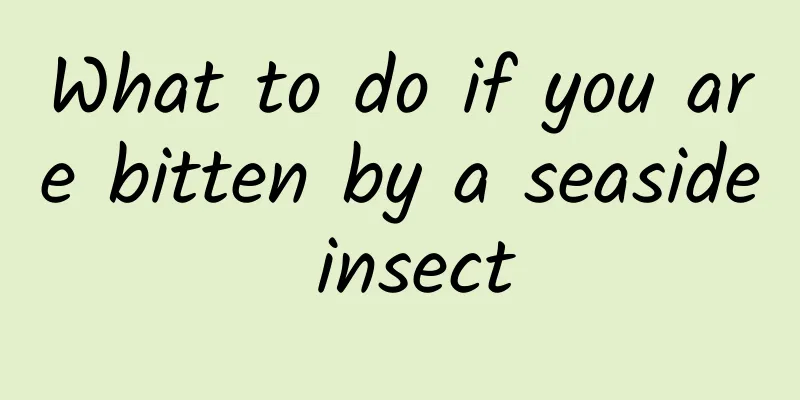Is varicose vein bleeding effective?

|
There are many treatments for varicose veins. During the treatment process, we must avoid some misunderstandings. Because this is a chronic disease, many patients may try all kinds of treatments during the treatment process. If the treatment is improper, it may cause greater harm. For example, if you have varicose veins, you cannot use bloodletting to treat it, as this method can easily cause hematoma and infection. Is varicose vein bleeding effective? wrong! Veins are an interconnected network. Although the patient's congestion symptoms will be alleviated after local bloodletting, the veins will quickly return to their full state. In addition, bloodletting will increase the probability of hematoma or infection. Get out of the misunderstanding of varicose vein treatment [Misconception 1] Varicose veins are painless and will not cause any serious problems. wrong! Varicose veins in the lower limbs are indeed painless and itchy in the early stages, but as the disease progresses, the skin on the calves will darken and even ulcerate. In a few cases, it can be life-threatening, such as rupture and bleeding, and blood clot formation. In normal people, venous bleeding can be stopped by applying pressure for a few minutes, but the pressure in varicose veins is very high, the amount of bleeding will be large and difficult to stop. Because you can't feel the bleeding, nighttime bleeding is more dangerous. As for thrombosis, if it spreads to the deep veins, it may lead to pulmonary embolism. [Misconception 2] Varicose veins are varicose veins of the great saphenous veins. wrong! Although most cases of varicose veins in the lower extremities are associated with lesions in the great saphenous vein, more than 10% of varicose veins associated with other lesions are caused by lesions in the small saphenous vein. The most typical example is that among the large number of postoperative recurrence cases we received, the majority of them were caused by missed small saphenous vein lesions. The small saphenous vein is located deep and lesions are not easy to detect. In addition, it is difficult to reach during conventional surgery. If the surgeon does not perform an ultrasound examination personally before the operation, it is easy to miss the diagnosis. Also, not all doctors know: when doing an ultrasound examination of varicose veins, the patient must be in a standing position! In addition: Be sure to routinely check your patient's abdominal wall for venous dilation. If present, iliac vein stenosis, occlusion, or Budd-Chiari syndrome should be ruled out. [Misconception 3] Varicose veins are more common in rural areas. wrong! According to statistics, varicose veins predominate in 20-30% of the population in developed countries, which is higher than in developed and middle-aged countries. The urban incidence rate is higher than that in rural areas. Moreover, among urban patients, there are more females than males. Why do people mostly see varicose veins on the legs of male manual laborers in rural areas? This is because urban people pay more attention to the appearance of their calves and will not easily expose their calves. In addition, urban residents tend to receive early surgical treatment once obvious varicose veins develop. [Misconception 4] If you have varicose veins, you should walk less. wrong! The calf gastrocnemius muscle is the "second heart" of the human body. The rhythmic contraction during walking can promote venous blood return. Standing or sitting for too long can cause blood stasis. Walking exercises can promote blood circulation. [Myth 5] Varicose veins are hereditary. wrong! There is currently no conclusive evidence that varicose veins are hereditary. Because the incidence rate is high among the population and there is a tendency for the disease to run in families, it is common to see multiple people in a family falling ill. [Misconception 6] Varicose veins can all be treated surgically. wrong! In some cases, varicose veins are not suitable for surgery. In the case of deep vein obstruction in the lower limbs, the varicose veins formed are often a form of compensation and cannot be treated surgically. Similarly, some congenital vascular malformations can also manifest as varicose veins, but surgery often cannot cure them and the recurrence rate is very high. |
<<: What to do if your legs are swollen due to varicose veins
>>: What to do if you have varicose veins in your legs
Recommend
How to treat hearing impairment
Hearing impairment is quite common in our daily l...
Symptoms of trachoma
Many elderly people suffer from diseases such as ...
What is a water monkey?
Water monkeys are mainly molluscum contagiosum. I...
I'm pregnant and there are red spots on my belly. What's going on?
If red spots appear on your belly during pregnanc...
Symptoms of a stroke
"Stroke" is just two simple words, but ...
What are the symptoms of rheumatoid arthritis?
Rheumatoid arthritis can be said to be a disease ...
What are the effects and functions of raw wheat drink?
The so-called raw oatmeal drink refers to drinkin...
Will hyaluronic acid injections cause side effects?
Hyaluronic acid has a wide range of uses. Hyaluro...
Advantages and disadvantages of pure titanium porcelain teeth
There are many advantages and disadvantages in pu...
White blood cell count is high
As we all know, pregnant women need to undergo a ...
What to eat for esophageal tumors? Medicinal diet formula has good efficacy
Esophageal tumor is a malignant tumor, which is m...
Is gastric ulcer serious? Pay attention to complications
If you do not pay attention to your diet and love...
Why does it hurt so much when you bite your tongue accidentally? Click to see
We have to admit that some parts of our body are ...
Side effects of anesthetic for wisdom tooth extraction
Sometimes wisdom teeth need to be removed. Before...
Chronic nasopharyngitis
There are many types of diseases in life, and the...









